David Suzuki's Blog, page 30
August 16, 2016
Protect threatened Algonquin wolves wherever they live

Hey! Want more DSF? Join David Suzuki on Facebook

August 15, 2016
How messy yards help bees
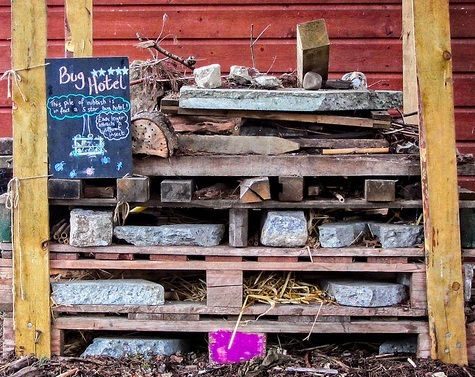
Place found materials — twigs, plant stalks and old sunflower heads — inside a reclaimed or repurposed box in your garden. (Credit: Garry Knight via Flickr)
Protecting pollinators means not using harmful pesticides. It also means providing welcoming habitat, even in your own backyard. And that's easier than you think!
Be a bee hugger
You can make your backyard a bee sanctuary. (Kids can help!) The secret? Keep it untidy! Chances are you're already doing at least one of these:
Let veggies bolt and flower. Besides being a great way to witness a plant's full life cycle, you can sit back and watch pollinators at work!
Collect twigs, bundle them up and leave them outside for bee nesting habitat.
Leave a patch of ground bare. About 70 per cent of Canada's native bees nest underground.
Have you noticed a line of little holes in your yard or lawn, about six millimetres (1/4 inch) in diameter? You probably have ground-nesting bees. Unlike honeybees, mining bees are solitary and don't form large, socially organized nests. Their ideal nesting sites are exposed, well-drained soils with little vegetation. Mining bees are not aggressive and rarely, if ever, sting.
Forget about having a manicured lawn. You're providing a home for important pollinators! And don't spread mulch -- it covers up their burrows.
Build a bug hotel
Bug or insect hotels attract insects that pollinate or act as natural pest control. They also provide overwintering habitat.
Place found materials -- twigs, plant stalks and old sunflower heads -- inside a reclaimed or repurposed box in your garden.
Build your own birdhouse-sized insect real estate (and piece of art). Fill it with natural materials like bamboo poles, pencil-sized brown paper tubes, small stones, pine cones and twigs.
Drill holes into an old log. Vary the size of the holes from half to one centimeter (0.2 to 0.4 inches) in diameter.
See complete DIY bug hotel instructions with images in Garden Made: A Year of Seasonal Projects to Beautify Your Garden and Your Life by Stephanie Rose and in this blog.
What else would you like to know about encouraging pollinators where you live?
Lindsay Coulter, a fellow Queen of Green
Hey! Want more DSF? Join David Suzuki on Facebook

August 11, 2016
Let's push the prime minister to get moving on climate
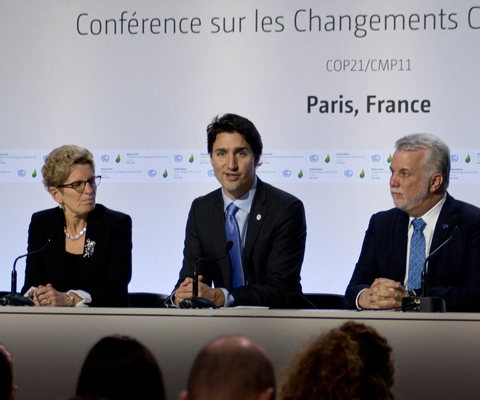
(Credit: Province of British Columbia)
Canadians of all political persuasions care about climate action. Watching Canada fall behind the rest of the world over the past 10 years has been deeply disturbing to many. We became climate laggards. We yearn to be leaders.
The hope that Canada would act on scientific evidence and contribute to climate solutions was bolstered when Justin Trudeau became prime minister in late 2015. He quickly announced he would personally go to Paris for the December climate negotiations. He gave his new environment minister, Catherine McKenna, the expanded title of "minister of environment and climate change," and sent her to COP21 with instructions to make Canadians proud. He even convened all the premiers before Paris to review the latest climate science.
Minister McKenna took a decisive position in the Paris negotiations, making Canada the first industrialized country to raise the stakes in the treaty negotiations. She rightly took the position that the world had to move to hold global average temperatures to no more than 1.5 C above pre-Industrial Revolution levels rather than the 2 C set during earlier negotiations. Once Canada moved, the world followed.
By March, Prime Minister Trudeau had assembled provincial and territorial premiers once again, to start work on a plan for carbon pricing and advancing clean technology.
In June, he joined the presidents of Mexico and the United States in committing to begin reducing fossil fuels in the electricity grid, and to work together throughout North America to reduce methane (a potent greenhouse gas) in oil and gas production, among other pledges.
So, how much better is Canada's climate target than before the Liberals swept to power? Astonishingly, not one bit. Despite all the activity that has taken place, Canada is ignoring its greenhouse gas emissions reduction goal. The Paris Agreement doesn't include individual national promises. Those have been made and tabled with the UN climate secretariat. Canada's target was tabled in May 2015 by former environment minister Leona Aglukkaq. It's the weakest in the G7. Of course, the previous government made few plans and took no steps to hit its mark. But the Harper government's goal of reducing emissions 30 per cent below 2005 levels by 2030 is still Canada's target. So while the premiers are building a plan, they're building it to hit the old, weak target.
Canada's leadership in getting the world to agree to hold global average temperature to 1.5 degrees will come to nothing if our current levels of commitment remain in place. In fact, the impact of the aggregate of actions pledged to date by all nations -- assuming all countries hit their targets on time -- will not be to hold global average temperature to 1.5 C. Those actions will not hold temperature to 2 C. The impact of hitting current targets on global average temperature ranges from 2.7 to 3.5 C.
Unless the current round of targets is withdrawn and replaced by more ambitious actions -- something called for in the Paris Agreement as "ratcheting up" -- we'll lose any chance of keeping Arctic ice at the pole, which will set off feedback loops that will accelerate global warming. Cascading events of greater severity will become unavoidable.
These levels of global average temperature increase are beyond catastrophic. Low-lying island states will be condemned to sinking below the rising sea level. Increasingly persistent and severe droughts and floods will force millions from their homes and have devastating impacts on food and water supplies. And we will run a growing risk of passing thresholds in the atmosphere that amount to a point of no return. Human civilization cannot withstand runaway global warming.
Given the scale of the threat, how do we get our new prime minister to do the right thing? We have to demand it of him. We have to put the question of Canada's domestic target back on the table. We have to call out those who claim Harper's target is too tough to meet. Now is when we need to encourage, cheer and pressure our prime minister to step up -- for my grandchildren, for his children and for all of us. I believe he can do it. But we have to speak up. If enough people raise their voices, government representatives have to listen.
Hey! Want more DSF? Join David Suzuki on Facebook

Green Timiskaming and SolarShare turn marginal land into power
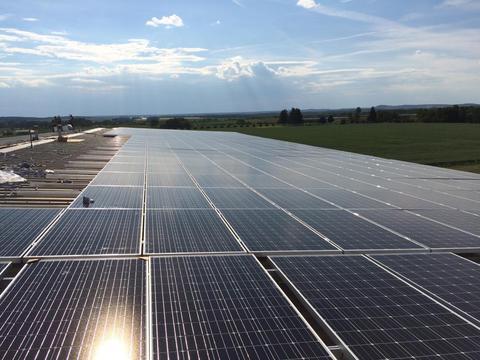
(Credit: Endura Energy)
Investing in community-owned solar power "really pays off." So says Ambrose Raftis, board chair of Green Timiskaming, a renewable energy co-op north of Sudbury near the Quebec border.
The payoff comes in a variety of inspiring ways.
Raftis, like many people in the north, is concerned about the faltering local economy, loss of farmers and what he calls "youth out-migration." And of course he's worried about climate change. Renewable energy is one solution to all these problems.
He helped to incorporate GT as a non-profit organization in 2009. Shortly after, the group applied to develop 20 solar-energy projects under Ontario's feed-in-tariff program, which guarantees renewable developers a fair price for their power for 20 years. In the end, the province offered GT 10 FIT contracts, nine for ground-mounted and one for roof-mounted solar.
Say no to coal, and say yes to renewables
After receiving the FIT contracts, GT realized it couldn't raise enough capital to develop the projects by itself. So it turned to SolarShare, a much larger Toronto-based renewables co-op with more than $30 million in assets. On March 30, the two groups announced they would amalgamate to develop the solar systems. GT initially planned to have them 51 per cent community-owned, but the merger means this figure will rise to 100 per cent, with SolarShare owning and maintaining the projects.
"SolarShare offers Ontarians the opportunity to invest in solar by purchasing a bond that pays five or six per cent annually," Raftis says. "So people's energy dollars stay in the community."
Local ownership is crucial because it creates a renewable-energy constituency -- a block of citizens who will defend renewables if they meet opposition, as happened with wind power in southern Ontario. "When people join our co-op, they have a stake in solar -- so they pay attention to it and vote for parties that support it," Raftis says.
Because much land in northeastern Ontario is poor for growing crops, many farmers there are struggling. GT/SolarShare will install photovoltaic cells on their property for 20 years and support them in two ways: by providing immediate revenue through lease payments and offering more down the road. "Farmers can leverage this future money to get credit from the bank and grow their operations," Raftis says. "Lenders like the fact the farmers now have a guaranteed income for two decades."
Raftis believes local generation projects serve a number of ends. In addition to creating electricity, they create a sense of agency. "Once you do community power, local people feel able to do other projects," he says. He wants to see an "eco-village" established in Timiskaming, in which northerners provide not only their own power but also food, water and housing. Drawing on micro-grids and greenhouses, the village would demonstrate that rural areas can thrive in the new economy. It would show that "we don't need Chinese or Alberta imports to feed ourselves or heat our homes. In fact, through this self-sustaining model we can build a higher quality lifestyle while consuming fewer resources."
Raftis's vision is ultimately about changing the nature of the economy. He wants it centred on sharing, "So we can get our joy in life not from shopping but from sharing with friends and neighbours."
To learn more, visit www.greentimiskaming.ca or www.solarbonds.ca.
Hey! Want more DSF? Join David Suzuki on Facebook

August 9, 2016
Ten simple "green" cleaning substitutes for borax
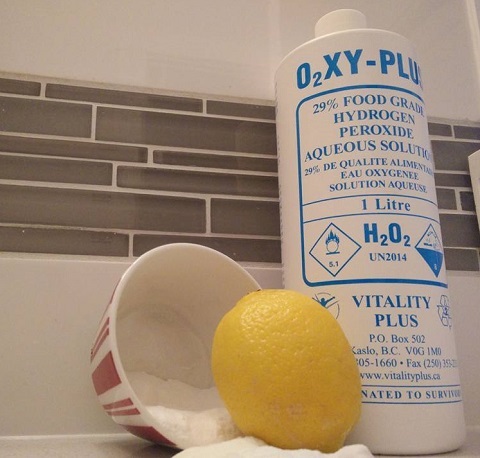
Try lemon juice or food-grade hydrogen peroxide to disinfect and baking soda to whiten laundry. (Credit: Lindsay Coulter)
Last week I suggested you ditch borax -- a salt of boric acid -- as a "green" home cleaning ingredient. (I used to call it "a less toxic but not least toxic" ingredient.)
Six reasons to go borax-free:
Your home is already pesticide-free (borax kills ants)
You can clean well with food-grade ingredients only -- baking soda, salt, vinegar and hydrogen peroxide (treat stains, too)
You can use borax-free "green" cleaning recipes -- here are nine
You won't risk poisoning your child or pet
You can clean risk-free while pregnant
Your children can help make the cleaners AND do the cleaning!
Simple substitutes for borax to clean "green"
To disinfect, use:
Lemon juice, a mild antibacterial acid that bleaches and disinfectants.
TIP: Rub half a lemon on a dirty cutting board, then wipe clean. (Add salt for extra cleaning power.) Place the other half in a bowl, microwave for one minute then use it to rub down the inside of your microwave. Let sit for a few minutes and wipe clean.
Vinegar, which can tackle household bacteria like salmonella, E. coli and other "gram-negative" bacteria. Mix equal parts water and vinegar in a spray bottle.
Food-grade hydrogen peroxide . Use a three per cent solution in a spray bottle.
Essential oils such as lemon, lime, orange, grapefruit, tea tree, lemongrass, thyme, lavender, rosemary and eucalyptus, which have antibacterial, antifungal and grease-cutting properties. Add them to the concoctions above.
To whiten, use:
Baking soda, as in these three laundry soap recipes. Or, add half a cup (125 ml) straight into a load.
Lemon juice, to fight stains.
Washing soda (sodium carbonate) -- right in a load or in a laundry soap recipe. It's more caustic and has a higher pH than its cousin, baking soda.
Oxygen bleach, in liquid or powdered forms. Follow product instructions. Safe for cloth diapers.
To fight mould and mildew, use:
Salt, as in this borax-free laundry soap!
Vinegar, carefully on tub and tile.
Finish off your last box of borax. Sign up for my monthly digest for other assessments and/or cleaning substitutes.
Sincerely,
Lindsay Coulter, a fellow Queen of Green
Hey! Want more DSF? Join David Suzuki on Facebook

August 4, 2016
Bloor Bike Lane is reason to celebrate

(Credit: Commmodore Gandalph Cunningham via Flickr)
Construction of bike lanes on Toronto's Bloor street got underway this week -- the fulfillment of a decades-long wish by citizens hoping to address global warming and air pollution, reduce congestion and boost physical fitness.
But some of the initial media coverage has been less than celebratory. A headline in the Toronto Sun said, "Bloor bike lanes get mixed reviews", and CBC said the lanes' installation was causing "bumper-to-bumper traffic" and would mean loss of parking spaces. The Toronto Star was more upbeat, but even that progressive paper cautioned that businesses and drivers were only accepting of the project "so far".
The negative tone is disappointing. Any construction brings inconvenience, but in this case it will be short-lived. Installation should be complete in two weeks, and the project's long-term value is considerable.
The new bike lane will be a boon to local businesses when complete. Research shows people arriving by bike spend more money than those arriving by automobile. In fact, researchers at Portland State University discovered that customers who cycle spend 24 per cent more per month than those who are car-based, possibly because lower fuel and maintenance costs free up money for other things. The New York City Department of Transport found that, following creation of a protected bike lane on Ninth Avenue, local businesses enjoyed up to a 49 per cent increase in retail sales. It's not surprising that during debates on the Bloor lanes, more than 70 business owners voiced support for the project.
The project is also likely to help Toronto achieve its greenhouse gas reduction targets. A study just published by McGill and Concordia University scientists in the journal Transportation Research (August 2016) looked at the emissions cuts associated with building cycling infrastructure -- and thereby reducing automobile dependence -- in Montreal. Its conclusion: "A reduction of close to 2% in GHG emissions is observed for an increase of 7% in the length of the bicycle network. Results show the important benefits of bicycle infrastructure to reduce commuting automobile usage and GHG emissions." A two per cent drop in GHGs may sound small, but the researchers say that's the amount that would occur if Montreal converted its diesel buses to hybrids and electrified its commuter trains, a very extensive overhaul. It's far cheaper, not to mention faster, to create bike lanes.
I live close to Bloor and, walking by the construction each morning, I already sense the lane will bring good things. It will make the roadway fairer, officially acknowledging cyclists' presence and giving them the protection they've long deserved. It will make the road more predictable and safer, not just for bike riders but also drivers. It will offer Torontonians the option of leaving the car at home and, at least on occasion, substituting two wheels for four, which could prove an exciting change in their lives.
I suspect it will also enhance the neighbourhood's charm.
Gideon Forman is a cyclist, Toronto resident and transportation policy analyst at the David Suzuki Foundation.
Hey! Want more DSF? Join David Suzuki on Facebook

Half measures aren't enough to save caribou

(Credit: mrccos via Flickr)
Alberta is home to two of Canada's imperilled caribou populations, the southern mountain and boreal woodland herds. Both are threatened with extinction.
Under the federal Species at Risk Act, the boreal woodland caribou recovery strategy requires provinces to develop range plans by 2017, outlining paths to recovery. Because caribou need large, intact areas, degraded habitat must be restored so industrial and natural disturbances affect no more than 35 per cent of each range.
The challenge to recover caribou is not Alberta's alone; it is a national undertaking. Boreal caribou are threatened in every province except Nova Scotia, New Brunswick and Prince Edward Island.
Federal assessments show high levels of oil, gas and forestry activity mean no boreal herd in Alberta is likely to survive without significant changes in habitat management. In 2011, the range of the Little Smoky herd was assessed as being 95 per cent disturbed by industrial activity, and oil, gas and forestry have since caused further damage.
In many ways, the Little Smoky herd symbolizes what is wrong with our approach to land management. While humans are one of about 10 to 30 million species, many of which require vast areas to survive, we set targets for protecting 12 per cent of our land base for wildlife while taking over the other 88 per cent. Politicians in Alberta have spoken of "balancing" economic and ecological values, but seeing less than five per cent of the Little Smoky range left undisturbed highlights the faulty scales.
Alberta recently released its draft range plan for the Little Smoky boreal and A la Peche southern mountain herds, allowing continued forestry and petroleum approvals in both ranges. It also proposes ongoing predator control -- in the Little Smoky range, hunters killed 841 wolves between 2005 and 2012 -- and a "rearing facility", a 100-square-kilometre permanent enclosure to fence in female caribou and "export" yearlings. The public can comment on the plan until August 5.
To be fair, the draft plan, based on a mediator's recommendations, includes progressive elements such as restoring old seismic lines, and the province has committed to significant protected areas for some northern caribou populations. And Alberta's current government is paying the price for previous governments' years of inaction to address caribou habitat needs.
But the plan's troubling components could set a terrible national precedent.
It outlines a vision for a "working landscape," where "caribou and careful development co-exist". Yet no evidence exists that working forests work for caribou. Caribou don't adapt to human presence like squirrels or raccoons. They're intensely shy creatures that avoid humans and human-created disturbances.
Band-aid solutions like predator control and enclosures don't pertain to Alberta alone; they represent a growing national trend of allowing industrial activities to continue, merely softening negative effects rather than ensuring adequate habitat is maintained for species' survival. Mitigation might lessen the bite of impacts or stave off extinction, but it will not advance recovery. That can only occur by restoring healthy, functioning ecosystems.
Governments that employ predator control rarely, if ever, pursue sufficient habitat protection measures to justify its use. By allowing habitat disturbance to worsen over the next five years, Alberta will likely prolong its reliance on killing predators.
Both predator control and permanent enclosures impair functional ecosystems, of which predator-prey dynamics are a linchpin. Caribou are integrally shaped by interactions with their habitat and the predators they try to avoid. Experiments like caribou enclosures muddy the recovery landscape. Captive breeding initiatives are usually cast as good news but often detour from addressing primary problems.
The mediator recommended examining the potential for similar enclosure projects in other caribou ranges. This must not happen. Wildlife "zoos" must not become the new norm. We should be blunt about what permanent enclosures represent: our epic failure to manage landscapes so they can continue to support wildlife.
As the mediator recommends, governments must work not only with industry to change management practices but also with conservation organizations and Indigenous communities, many of which rely on caribou -- or did before herds disappeared -- for sustenance. Provincial governments must uphold their responsibility to recover caribou by ensuring healthy ecosystems are maintained and restored. Half measures that keep caribou alive through human interventions while further degrading their homes won't suffice.
Hey! Want more DSF? Join David Suzuki on Facebook

How safe is borax?

You can clean without borax. Try my borax-free green cleaning recipes! (Credit: Lindsay Coulter)
Borax, or sodium borate, is an alkaline mineral salt. It's a naturally occurring element. But "natural" doesn't mean "harmless." Consider asbestos or mercury.
A brief history of borax
Before 2000, borax was a common household item. It was a popular, effective cleaning product. It disinfects, whitens and fights mold and mildew. It also kills ants (used as a low-risk pesticide).
Many DIY cleaning recipes featured borax as an eco-friendlier option to petroleum-based ingredients in conventional cleaning products.
In 2008, the European Union (PDF) classified boric acid and borax as reproductive toxins. But it said consumer exposure to low doses of borates in cleaning products--soaps and detergents--is 'negligible.'
Confused? Me, too. So I called another "green living" expert, Adria Vasil of Echololic, who was also researching the safety of borax (and, like me, had a box collecting dust). She tried to untangle the borax mess in 2014:
"A few years ago, the European Union (PDF) said boric acid/borax were reproductive toxins at high levels but not endocrine disruptors (which can trigger problems at quite low levels). At that point, they issued another report (PDF) assessing the actual risk to consumers and they said levels used in detergents/soaps/cleaning products were safe. Then things shifted. They ended up putting boric acid on the list of potential hormone disruptors. I think it's important to clarify that the list basically prioritizes substances for further research for endocrine disrupting effects. The list contains some seriously troublesome chems, like known toxin PCB, as well as BPA, on which hundreds of studies have found hormone disrupting effects. Boric acid doesn't have the same lengthy rap sheet in terms of hormone disruption. So a lot of people are confused. Should we should keep using it with abandon? Should we shelve it for good? Well, I think we should certainly pause and wait for more research. It's also unclear why the EU only put boric acid on the list and not borax, when they've lumped the two together before. However, they are chemically different. So we'll assume borax was intentionally left off the list and is of less concern to consumers then boric acid, at these quantities."
In 2016, Health Canada did a screening assessment of boric acid: "The Government of Canada is proposing that boric acid, its salts and its precursors may be considered harmful to human health at current levels of exposure."
What's "exposure"?
Through food (such as fruits and vegetables) and drinking water. But "Natural sources of boric acid in food (for example, fruits and vegetables) are not considered to be a health risk."
Through common consumer products such as pesticides, cleaning products, cosmetics, drugs, natural health products, and swimming pool and spa products.
From DIY arts and crafts and toys made with boric acid.
What now?
Clean without borax. Try my borax-free recipes for laundry soap, dish soap and toilet bowl cleaner (all purpose powder recipe).
Make borax-free cosmetics for baby, body and hair.
Make dough and goop (a.k.a. ooblek) for children out of food-grade ingredients.
For ants, try diatomaceous earth
Not ready to let go? Stay tuned! Next week's blog is about borax substitutes in green cleaning recipes. Sign up for my digest so you don't miss it.
Sincerely,
Lindsay Coulter, a fellow Queen of Green
Hey! Want more DSF? Join David Suzuki on Facebook

August 3, 2016
Say no to coal in Canada
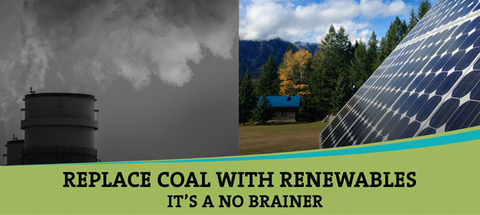
(Credit: David J, Will Mann and Pembina Institute via Flickr)
Hey! Want more DSF? Join David Suzuki on Facebook

August 2, 2016
Is borax safe?
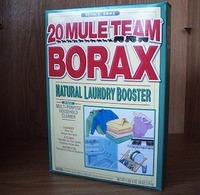
Delete borax from your DIY home cleaner recipes. (Credit: AlishaV via Flickr)
Borax (sodium borate) is an alkaline mineral salt.
It's a naturally occurring element but even things from nature can be harmful (like asbestos or mercury). Historically, it was a popular and effective cleaning product because it disinfects, fights mold and mildew and whitens. Our grandmothers always had a box on hand.
By 2000, borax appeared in many DIY cleaning recipes as an eco-friendlier option to petroleum-based ingredients in conventional cleaning products. (A few of my original green cleaning recipes did contain borax.) But by 2010, I changed most of my green cleaning recipes, like borax-free liquid laundry soap, to reflect the European Union calling the safety of borax into question. The E.U. classified boric acid and borax as reproductive toxins. Yet they said consumer exposure to low doses of borates in cleaning products falls below levels of concern.
And ever since then, the safety of borax as an ingredient in green cleaning recipes has been confusing. (I have an open box collecting dust.)
Adria Vasil of Ecoholic tries to explain:
"A few years ago, the European Union said boric acid/borax were reproductive toxins at high levels but not endocrine/hormone disruptors (which can trigger problems at quite low levels). At that point, they issued another report assessing the actual risk to consumers and they said levels used in detergents/soaps/cleaning products were safe. Then things shifted. They ended up putting boric acid on the list of potential hormone disruptors. I think it's important to clarify that the list basically prioritizes substances for further research for endocrine disrupting effects. The list contains some seriously troublesome chems, like known toxin PCB, as well as BPA, on which hundreds of studies have found hormone disrupting effects. Boric acid doesn't have the same lengthy rap sheet in terms of hormone disruption. So a lot of people are confused. Should we should keep using it with abandon? Should we shelve it for good? Well, I think we should certainly pause and wait for more research. It's also unclear why the EU only put boric acid on the list and not borax, when they've lumped the two together before. However, they are chemically different. So we'll assume borax was intentionally left off the list and is of less concern to consumers then boric acid, at these quantities."
In 2016, Health Canada did a screening assessment of boric acid. "The Government of Canada is proposing that boric acid, its salts and its precursors may be considered harmful to human health at current levels of exposure. Natural sources of boric acid in food (for example, fruits and vegetables) are not considered to be a health risk."
What now?
Clean without borax -- try my borax-free recipes for laundry soap, dish soap, and toilet bowl cleaner's-the-eco-friendliest-way-to-clean-a-toilet/
Don't make DIY slime or silly putty with borax
Hey! Want more DSF? Join David Suzuki on Facebook

David Suzuki's Blog
- David Suzuki's profile
- 247 followers



